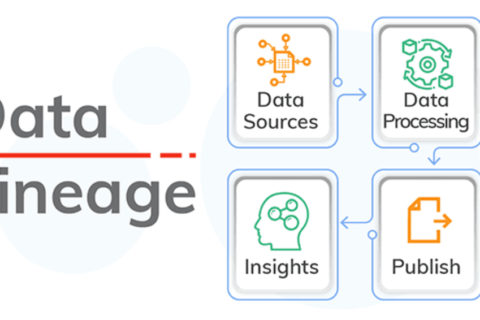Overview
Your application migration always won’t be going smoothly. There is an increased risk of data loss during migration and the risk of misconfiguration, all of which may result in a data breach. It is essential to take safety precautions during all phases of your migration to mitigate these risks.
One of the key challenges of the cloud migration strategy is the role of protecting critical business data during its transition from on-site data centers to the cloud. It also strengthens confidentiality when the data ends up in the cloud. The transfer of ownership of business data to a third party inevitably creates some dread. However, this should not be seen as an impossible barrier to switch to the cloud. Organizations need to adopt the cloud to succeed in today’s dynamic and digital business environment.
What is the strategy of Cloud Migration?
The cloud migration strategy is an organization’s initiative to transfer its data and software from the on-site to the cloud architecture. Not all workloads would benefit from operating on cloud-based infrastructure. It is, therefore, necessary to verify the most efficient way of prioritizing and migrating applications before they go live.
Migration Process:
Lower hosting costs:
In the cloud, you no longer have to think about the costs and conditions of having physical servers running. The third-party data center operates servers, mostly on a subscription-based model that eliminates capital expenditure.
Availability and Scalability:
Cloud-based services automatically scale capacity to rise or fluctuate demand. But they also encourage teams to coordinate from anywhere on-site on application changes or problems. This level of consistency will provide companies with a legitimate competitive advantage.
Decreased footprint:
As server capacity is scaled up and down to suit the cloud needs, you only use the energy and resources you need.
Disaster recovery:
It is necessary for all sizes of enterprises, but traditionally it is costly for smaller enterprises. Today, the cloud is helping more companies adopt backup and recovery technologies that require less time to invest.
Security:
Cloud provides better security than data centers by centrally storing your confidential data and applications. Many cloud providers often keep unauthorized traffic from accessing your data through daily security updates. This also makes you free from security risks.
What are the challenges of cloud migration?
Downtime:
The migration phase may require in-house servers to be temporarily offline. But errors may be catastrophic for the performance of the application and, by extension, customer loyalty if they are not accompanied by adequate backup or resource allocation.
Data loss:
Your company’s data is most insecure as it transfers to the cloud. Any of them may be inaccessible or at risk of being breached. Extreme precaution must be taken to minimize the possibility of infringement by applying cloud protection measures such as privileged access management and app encryption.
Resource management:
Not all IT professionals depend on the cloud. Employees who manage physical servers require training on new infrastructure. In other situations, cloud adoption includes creating new positions in IT management or the transformation of the very backbone of business operations.
Interoperability:
It’s not easy to get the current systems to connect with newer cloud environments properly. You may need to adjust your processes to those of your cloud provider.
Processes to secure migration:
Create cloud-centric security models:
Many companies are neglecting to update their security policies to speed up public cloud requirements. They prefer to rely on legacy protocols, or they will be patching new protocols to legacy ones. They expect that any of those two solutions will work. You have to identify two conditions in order to protect your application in the cloud. First, the extent of your network perimeter, and second, determine which areas of your application infrastructure need to be redesigned for cloud purposes.
Defining the parameter allows you to assess the scale of the mission ahead of you. This will also notify a perimeter security strategy. Many organizations tend to build cloud-specific controls based on solutions provided by third-party providers. This gives them the ability to switch between services depending on their current needs. However, this strategy allows you to have significant in-house security expertise to assess and determine which solutions need to be switched. The alternative is to route traffic via on-site networks. This works well so that you can continue using your security software.
If the network perimeters have been established, take the time to determine whether you need to incorporate application modernization programs or redesign parts of their architecture to meet cloud requirements. Redesigning will slow down the migration rate, but it ensures that your applications are as stable as they can be.
Redesigning cybersecurity controls for the cloud:
You will need to establish cybersecurity controls for the various areas around your applications. The place to start is identity and access management (IAM). But these days, IAM solutions are gradually shifting to the cloud itself. Choosing a third-party IAM cloud provider that can manage many clouds will set the company up safely for the future. You’ll need to focus on the best approach to security key management. We need to check and also revise application-specific security protocols to keep pace with the requirements of the cloud. You would also need to set up developer governance procedures to ensure that safety standards are not breached.
Moving to the cloud often needs to follow government and industry-specific regulations. It’s a good idea for your company to revisit enforcement needs anyway and to work collaboratively with your CSP to resolve the problem.
Redefining DevOps for security:
DevOps is a common approach to the deployment of applications these days. No better structure is possible to uphold the concepts of continuous release. Build a stable DevOps plan incorporating security assessments, security analysis, and security technology implementation. To achieve their goals, stable DevOps activities are automated. Teams can build code templates and also automatic tools for testing. This helps developers to incorporate security in all areas of the production of code. Integrating security staff into production teams is an excellent way of keeping security up to date with the constant release requirements.
In order to accelerate the protection of the security-centered DevOps community, many people in your organization would need additional training. They will need to educate developers on APIs to incorporate stable DevOps methodology into their daily work. This helps the dev team react to security breaches more quickly and creates more robust platforms.
5 Tips For a Secure Migration
The following tips should help you to ensure that your cloud and data are protected when migrating.
Understand the shared responsibility model:
Under a standard accountability model, cloud providers run. You need to understand the aspects that are responsible for this model to ensure your migration is safe.
Consider a phased migration:
Transferring your data in a phased migration will protect your team by building cloud system familiarity. You can unload those storage resources with managed risk by starting with low-priority data. Before transmitting high-priority or sensitive data, you can test your configuration to find any bugs or vulnerabilities in security.
Understand compliance requirements:
You have to know which regulatory standards apply to your data when you move into the cloud. You can decide how storage, encryption, backup, and transfer requirements can be met. Some regulations may require you to keep the information only on-site. Although cloud providers provide resources to help you achieve compliance, you will be penalized if compliance is not achieved.
Encrypt data:
Encrypt your data in-rest and in-transit while transitioning to the cloud. When exposed to the Internet, data is most vulnerable. So make sure that during any transfers, you use secure transport protocols (such as HTTPS).
Centralize your monitoring:
Cloud networking can increase the chance of attacks in speed and also in number. These risks need to be resolved, and the current systems must continue to be secured. Moreover, your migration protection depends on the type of cloud you select, the provider, and the measures you choose.
Bottom Line
Make your migration strategy secure. After migration, track your systems actively to ensure your data remains secure. You may also use the security software and available services. If you have any queries, then please feel free to contact us! Please browse our website to know more about us and our services.
Cloud computing is no doubt an excellent way to improve application efficiency. Cloud migration, therefore, needs to be accompanied by equally strong security protocols so that all the benefits you promise are achieved. You can follow the above tips and processes to secure your application’s migration to the cloud. If you find this article interesting, then please read our blogs too.




